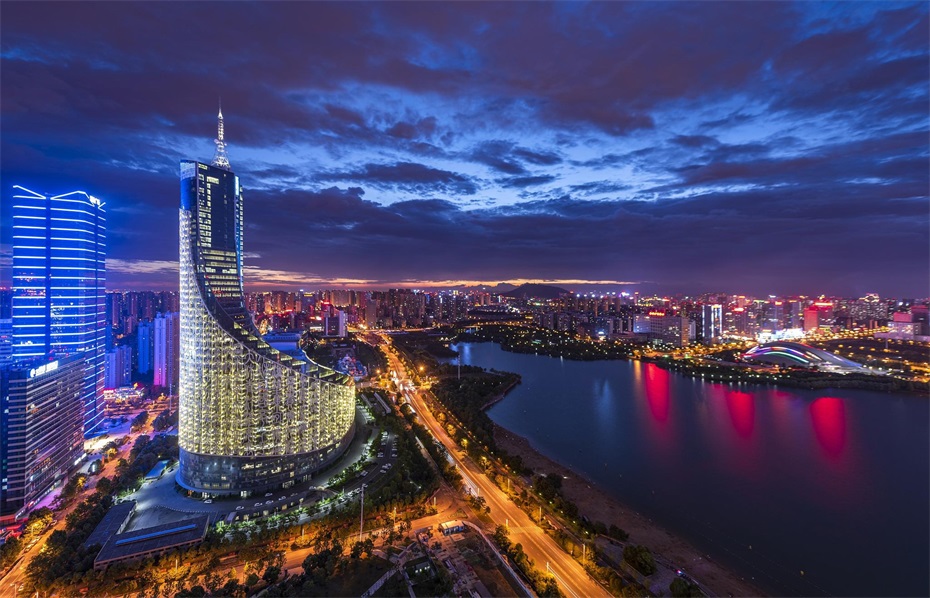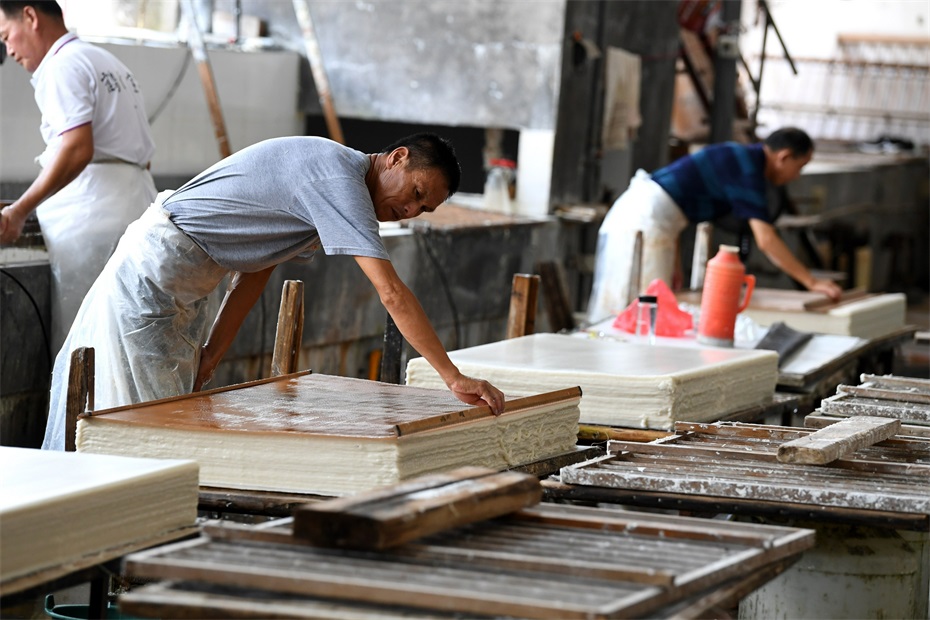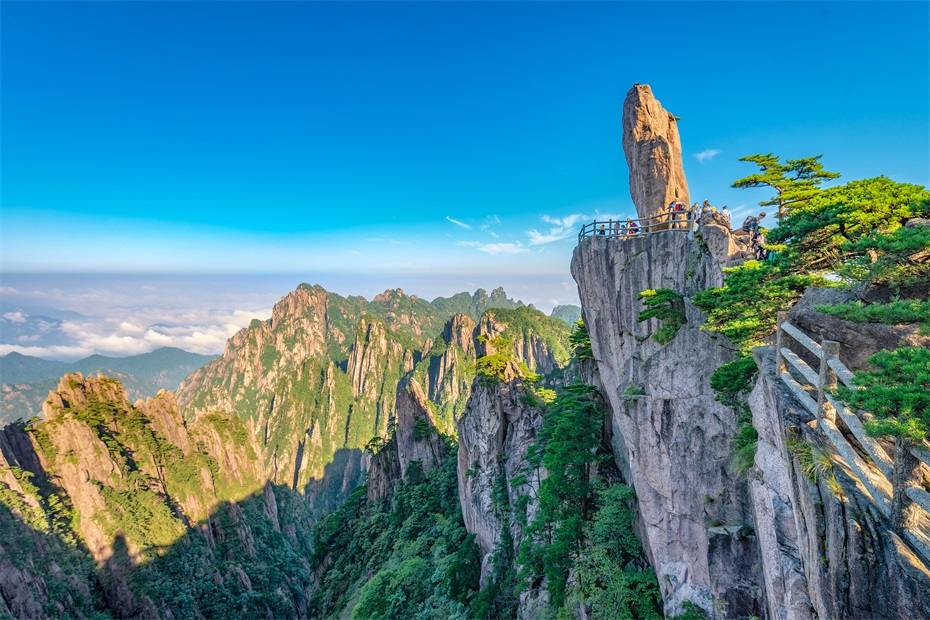Anhui Province
Overview of Anhui Province

Anhui Province, abbreviated as "Wan", is located in the eastern part of China, in the hinterland of the Yangtze River Delta, and is an important link connecting the Central Plains and Jiangnan. The total area of the province is 140100 square kilometers, with 16 prefecture level cities under its jurisdiction and a permanent population of 61.27 million people (2022 data). In 2022, the total regional GDP of the province will reach 4.5 trillion yuan, ranking among the top in the Yangtze River Delta region in terms of growth rate, and is accelerating its integration into the national strategy of integrated development in the Yangtze River Delta.
Anhui now governs 16 prefecture level cities, including Hefei (provincial capital), Wuhu, Bengbu, Huainan, Ma'anshan, Huaibei, Tongling, Anqing, Mount Huangshan, Chuzhou, Fuyang, Suzhou, Lu'an, Bozhou, Chizhou and Xuancheng. As an important agricultural production base, energy and raw material base, and source of technological innovation in China, Anhui is known as the "land of Jianghuai" and the "Anhui style", and is also the main birthplace of rural reform in China.
2Īó Geographical features
1. Location characteristics
Anhui Province is located between 29 ĪŃ 41 Īõ -34 ĪŃ 38 Īõ N latitude and 114 ĪŃ 54 Īõ -119 ĪŃ 37 Īõ E longitude. It borders Jiangsu and Zhejiang to the east, Henan and Hubei to the west, Jiangxi to the south, and Shandong to the north. The Yangtze River and Huai River run east-west, naturally dividing the province into three major regions: the Huaibei Plain, the Jianghuai Hills, and the Wannan Mountain area.
2. Terrain and landforms
The terrain of the whole province is characterized by high in the south and low in the north:
North: Huaibei Plain (accounting for 30% of the province's area)
Central region: Jianghuai Hills (accounting for 31% of the province's area)
Southern region: Southern Anhui mountainous area (accounting for 39% of the province's area)
The highest peak: Lotus Peak of Mount Huangshan Mountain (1864m above sea level)
3. Water system distribution
The Yangtze River system: flowing through southern Anhui and the areas along the Yangtze River
Huai River system: the main water system in the north
Xin'an River System: Mother River in Huizhou Region
Chaohu Lake: One of the Five Major Freshwater Lakes in China
4. Climate characteristics
Transition climate from warm temperate to subtropical:
Annual average temperature: 14-17 Īµ
Annual precipitation: 800-1800 millimeters (more in the south and less in the north)
Significant features: distinct four seasons, significant plum rain
3Īó Historical context
1. Origin of Civilization
Paleolithic Age: Hexian Ape Man Site (300000 years ago)
Neolithic Age: Lingjiatan Culture (5500 years ago)
Spring and Autumn Period and Warring States Period: the transitional zone between the states of Chu, Wu, and Yue
2. Organizational history
During the Qin and Han dynasties: Jiujiang Commandery, Lujiang Commandery, etc
During the Tang and Song dynasties: Jiangnan West Road and Huainan Road
1667: Jiangnan Province was divided into Anhui and Jiangsu provinces
In 1952, the administrative districts of northern and southern Anhui merged to restore Anhui Province
3. Modern and Contemporary Development
In the middle of the 19th century: Anqing Inner Ordnance Institute (the beginning of the Westernization Movement)
In 1978, Xiaogang Village in Fengyang initiated rural reform through the implementation of the "big package" policy
21st Century: National Strategy for the Integrated Development of the Yangtze River Delta
4Īó Cultural Essence
1. Regional cultural characteristics
Huizhou Culture: Cheng Zhu Neo Confucianism and Huizhou Merchant Spirit
Huai River Culture: Characteristics of the Inclusive Transition Zone
Wanjiang Culture: Characteristics of Openness and Innovation Along the Yangtze River
Red Culture: The Revolutionary Spirit of the Dabie Mountains
2. Intangible Cultural Heritage

Folk Art: Huizhou Three Carvings, Wuhu Iron Painting
Traditional skills: Xuan paper making, She inkstone carving
Folk Culture: Huizhou Temple Worship, Chaohu Folk Songs
3. Dialect characteristics
Jianghuai Mandarin: Central and Yangtze River regions
Central Plains Mandarin: Huaibei area
Huizhou language: Southern Anhui mountainous area
Gan dialect: Some western regions
5Īó Tourist destinations
1. World Heritage Sites

Xidi and Hongcun (ancient villages)
China Grand Canal (Anhui section)
Lingjiatan Site (tentative list)
2. 5A level scenic spot
Mount Huangshan Scenic Area
Jiuhua Mountain Scenic Area
Tianzhu Mountain Scenic Area
Guhuizhou Cultural Tourism Zone
sanhe ancient town
3. Featured tourism
Tour of Ancient Villages in Huizhou: Hongcun, Xidi, Chengkan
Buddhist Pilgrimage Tour: Jiuhua Mountain, Sikong Mountain
Red Tourism: Jinzhai Revolution Museum
Ecotourism: Tiantangzhai, Guniujiang
6Īó Food map
1. Anhui Cuisine Cuisine Features

Mao Tofu: Unique Fermentation Process
Hu Shi Yipin Pot: Jixi Traditional Hot Pot
Knife Plate Fragrance: Huizhou Bacon
2. Local snacks
Hefei crayfish
Wuhu Shrimp Seed Noodles
Huainan Beef Soup
Anqing Jiang Mao Dumplings
Fuyang Gelatiao
3. Specialty drinks
Huang Shan Mao Feng tea
Lu'an Gua Pian
Gujing Gong wine
Keemun Black Tea
7Īó Development Status
1. Industrial system
Emerging Industry: Landmark of Hefei's "Chip Screen Automotive Integration" Industry
Modern Agriculture: Green Agricultural Product Production, Processing and Supply Base in the Yangtze River Delta
Cultural and tourism industry: Wannan International Cultural Tourism Demonstration Zone
Digital Economy: "China Sound Valley" Artificial Intelligence Base
2. Transportation network
High speed rail: The "rice" shaped high-speed rail network has basically formed
Water transportation: Yangtze River Golden Waterway, Jianghuai Canal
Aviation: 5 transportation airports including Hefei Xinqiao International Airport
Highway: Over 5500 kilometers of highways have been opened to traffic
3. Innovation ecosystem
Hefei Comprehensive National Science Center
Wuhu and Bengbu National Independent Innovation Demonstration Zones
Concentrated area of large scientific facilities (fusion reactors, synchrotron radiation, etc.)
The construction of "University of Science and Technology Silicon Valley"
From the ancient charm of Huizhou to the innovation highland, from an agricultural province to a technologically strong province, this picturesque land of "Anhui" is writing a new chapter in the construction of a modern and beautiful Anhui with the reform spirit of "daring to be the first" and the development concept of "innovation beyond". Here, there is not only the breathtaking scenery of "returning from the Five Sacred Mountains without looking at the mountains", but also the enterprising attitude of "the great Peng rises with the wind in one day", which is becoming an important growth pole for the integrated development of the Yangtze River Delta.
simliy
